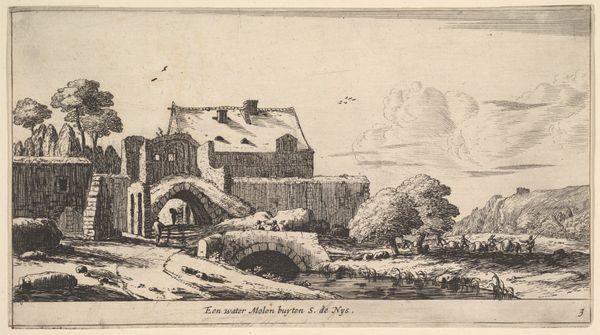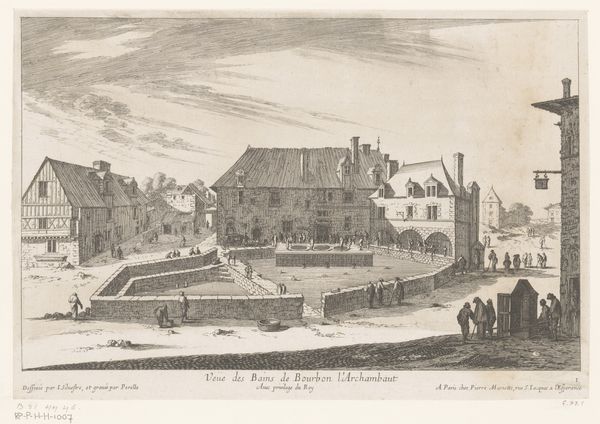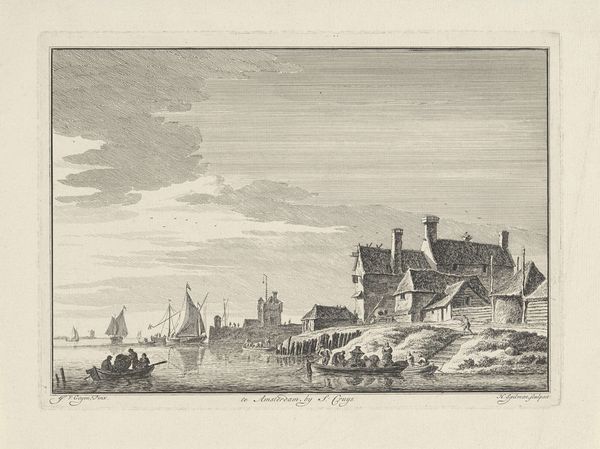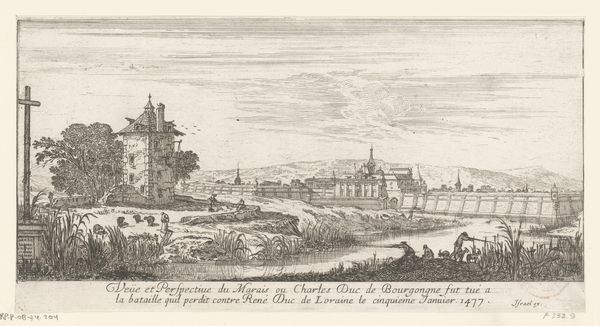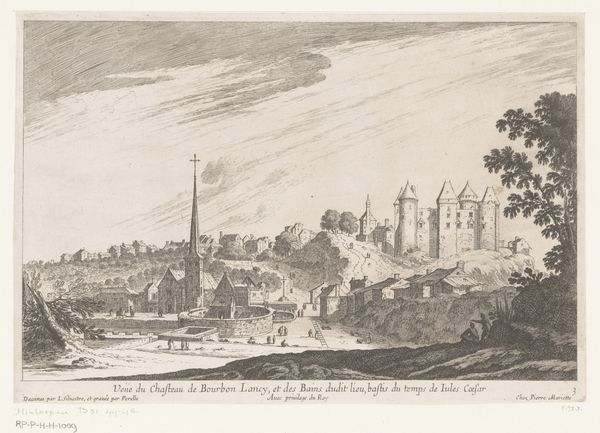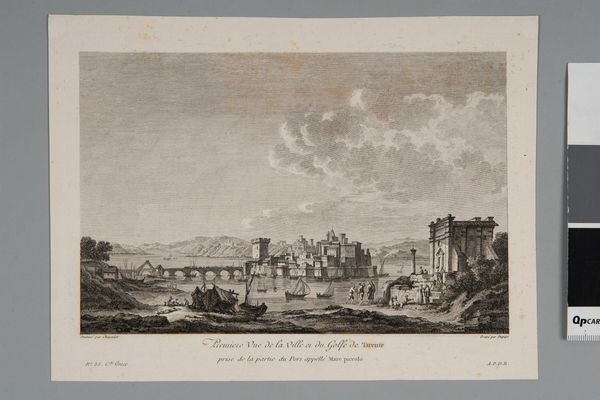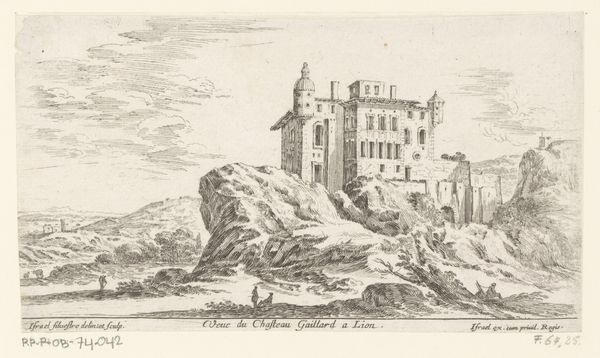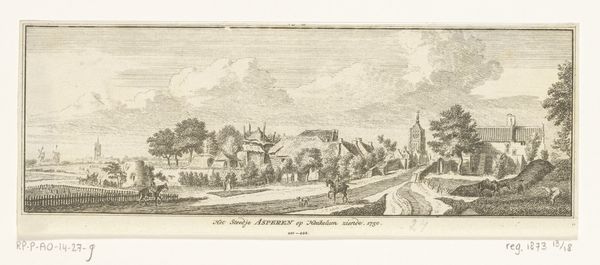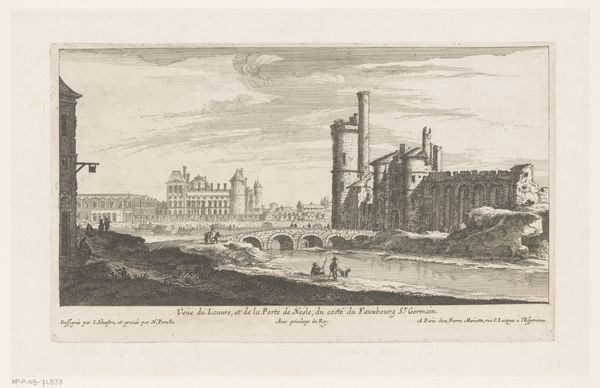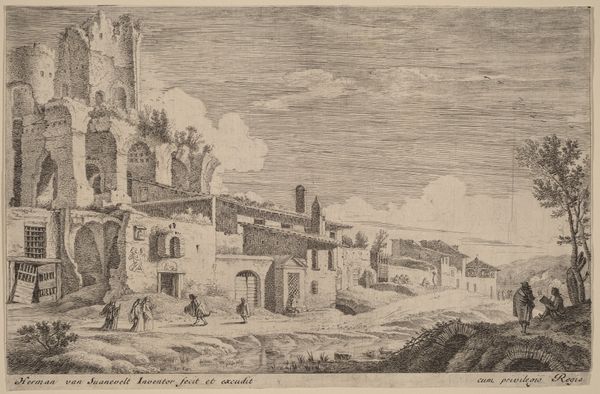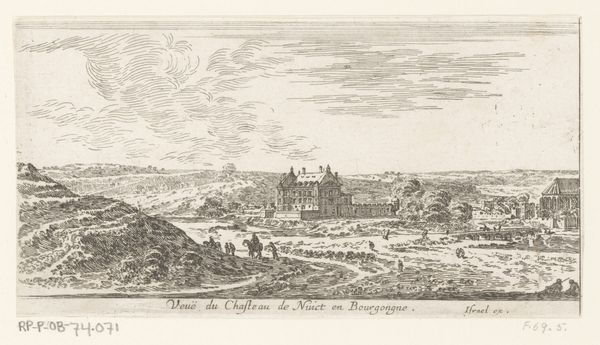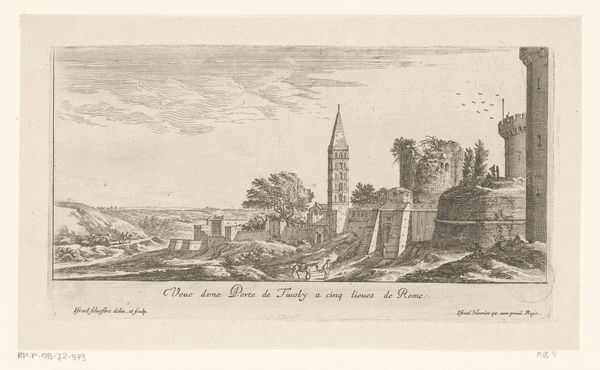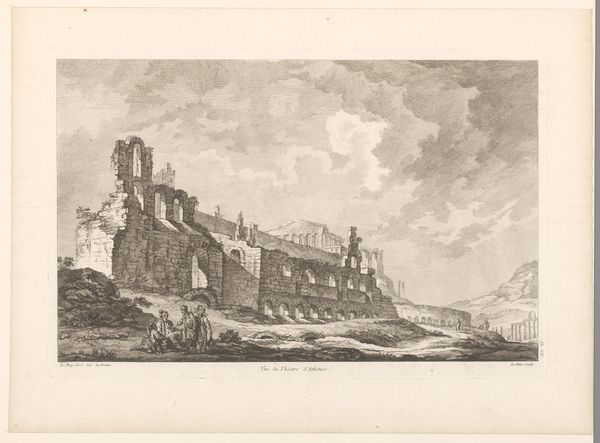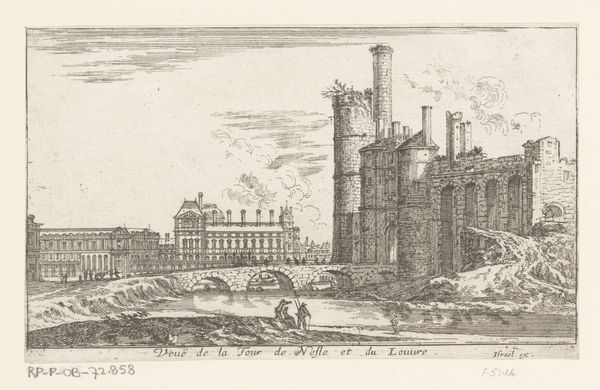
print, etching, engraving
#
baroque
# print
#
etching
#
landscape
#
cityscape
#
engraving
Dimensions: height 120 mm, width 198 mm
Copyright: Rijks Museum: Open Domain
Curator: Looking at this print, “View of the Château de la Roche-Guyon,” made around 1658 by Israël Silvestre, what strikes you first? Editor: It's captivating, how the composition directs the eye. The stark, almost barren landscape contrasts dramatically with the elaborate detail of the château itself. Curator: Indeed. Silvestre, primarily known for his detailed cityscapes and landscapes, frequently worked with etching and engraving. This piece would likely have been created using those techniques, a copper plate meticulously worked. Consider the artisanal labour invested. Editor: Absolutely, but also the societal function. These prints served as both documentation and promotion, circulated amongst elite circles. They reinforced notions of power, architecture presented as symbols of dominance, and these were certainly destined for display in aristocratic homes or even within governmental institutions. Curator: Consider the raw materials – copper, paper, ink – their sourcing, cost, and the workshop where it was produced. Prints like these also offered a way for a wider, albeit still privileged, audience to ‘experience’ places like La Roche-Guyon, effectively democratizing access, yet perpetuating established hierarchies of the time. The artist acting almost as a production line himself! Editor: But not quite! While mass production might be suggested by the medium of print, it also provides a sense of cultural exchange. Who was able to access and appreciate it would absolutely have dictated whose world-view would be shaped and expanded. Curator: Yes, this form of reproductive art allowed buildings and structures to be shared much further afield and even the method of dissemination, who bought them, how were they shared amongst the people. Editor: Well, reflecting on Silvestre's rendering, I'm left wondering, how many prints of La Roche-Guyon shaped perceptions of French power at the time? Curator: And how did the act of repetitive making by hand underscore both artistic skill and early industrial practice? There’s so much wrapped into a single print.
Comments
No comments
Be the first to comment and join the conversation on the ultimate creative platform.
